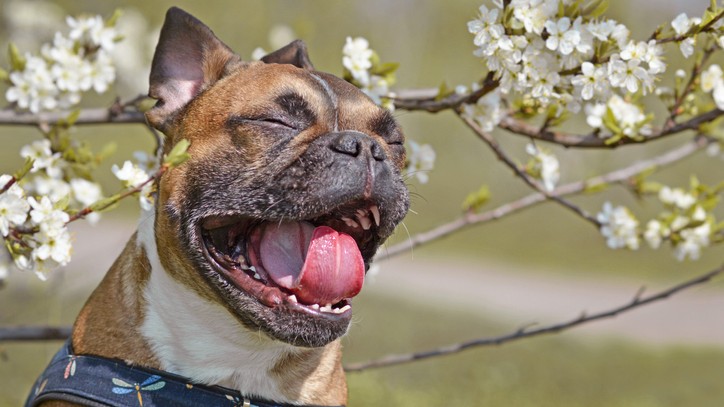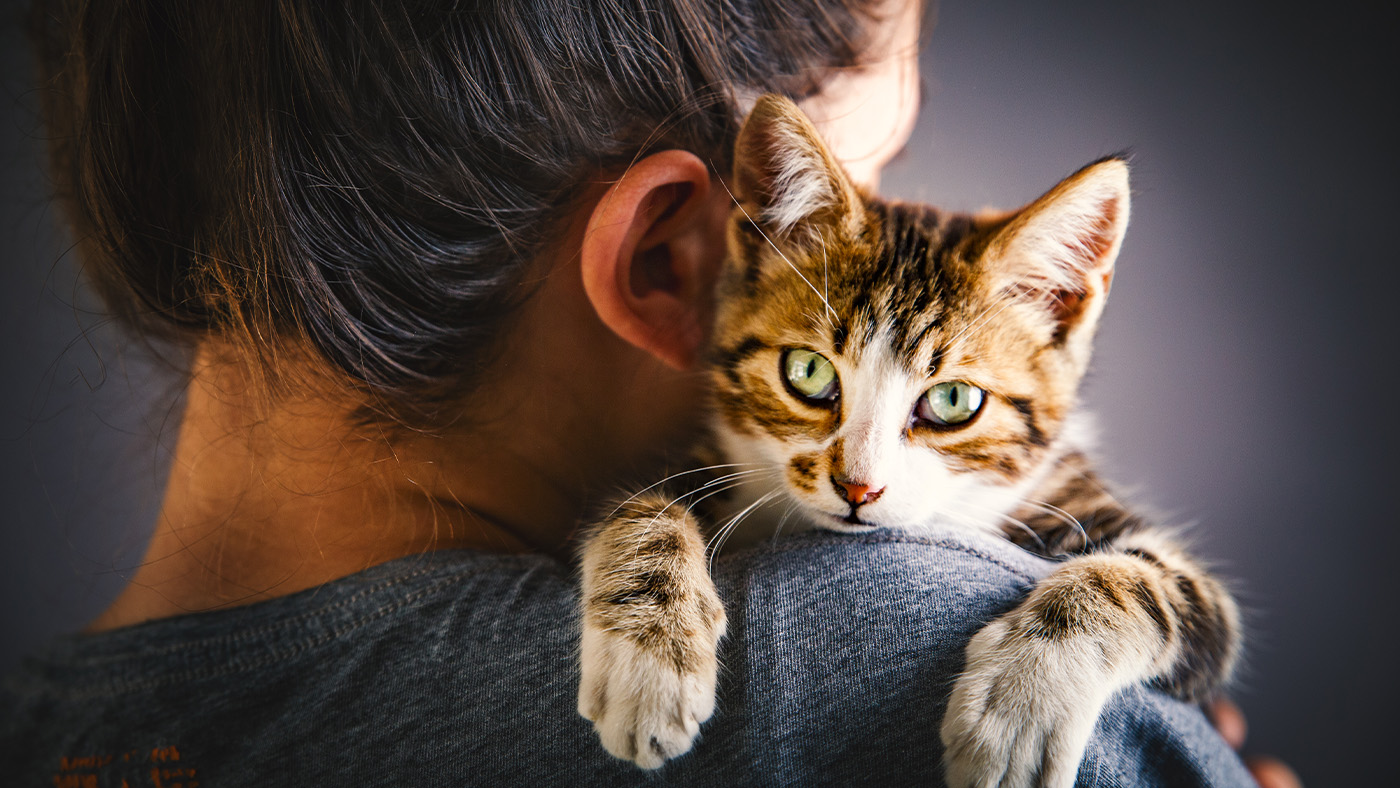Nine tips for coping with allergic pets
Vets treat allergic pets every day but can’t always find time to give you these home-care tips

If you’ve got allergic pets, you’re probably wondering what you can do to help them cope with their allergies. Both cats and dogs can get severe allergies to pollen, fleas, food and other things, and symptoms can be so bad that they scratch until they bleed. Whilst a vet will be able to help you diagnose and treat the allergies, sometimes it’s the little things that help you help your pet.
- Best dog food for allergies: Keep your canine companion fighting fit with these hypoallergenic foods
- Best cat food for allergies: Great nutrition for sensitive stomachs
1. Get a diagnosis of what your pet is allergic to
Going to the vet is the first step in helping your pet cope with their allergies. And not just going once- allergies are tricky and you’ll probably have to make several visits, or even visit a veterinary dermatologist. Diagnosing an allergy in cats and dogs can involve exclusion diets, blood tests and skin tests –2. your vet will advise which tests your pet should have. The most important thing is that you get your vet involved early, before the picture gets muddled. Once you know what your pet is allergic to, it’s much easier to come up with ways to avoid the allergen and help them cope.
2. Understand the role of food allergies for pets
A lot of people immediately assume that their pet’s allergy is to food, but you should know that this makes up just 10% of dog allergies. Switching food often or to random brands is unlikely to have any effect and can even make it harder for your vet to get to the bottom of what’s going on. Whilst changes to your pet’s diet may help, it’s best if you make the diet changes under the direction of your vet for full effect. Similarly, though, every allergic pet should have an exclusion diet trial to assess the impact of food allergies on them. If your pet hasn’t had one yet, it’s time to look into it. You can read our article about food allergies in pets for more information.
3. Make your Pet’s “itch threshold” work for you
Not everything is itchy enough that your dog will start itching. But everything adds up, until something even slightly pushes them over the edge and causes them to start scratching or licking. And once they’ve started scratching, it’s hard to stop. This means that lots of little changes can make a big difference to your pet by dropping them below the itch threshold; reducing the itchy things your pet contacts is important.
Ensure their collar isn’t wool, their bed is hypoallergenic, and any coats aren’t rough or itchy. Keep them well groomed, so that loose fur isn’t contributing to an itch. Salt water can be itchy when it dries, so consider rinsing your pet off if they’ve been for a swim. In other words: looking at your pet’s environment and making sure you’re doing everything you can to reduce the itch they feel on a day-to-day basis can help them to cope with their allergies.
4. Treat your pet for fleas all year around
You might be wondering why treating your pet for fleas can help you cope with their allergies. There are two reasons for this. One is the itch threshold, discussed above. Making sure that an annoying flea bite isn’t the thing that tips them over into scratching is easy to do – just make sure they are covered for fleas year-round. Around 8% of cats and 3% of dogs are also allergic to flea saliva, and can have an extreme reaction from a single flea bite. Keeping your allergic pet, and other pets in the house, up-to-date is an easy way to help your pet cope with their allergies, especially where flea allergies are involved.

5. Take steps to reduce the pollen in your house
Hopefully, you listened to tip number 1 and found out what your pet is allergic to. Lots of pets are allergic to pollen from weeds, trees, or grasses. And any hay fever sufferer will know that taking steps to reduce their exposure to high pollen counts can be helpful. If your pet has allergies to pollen, you can take steps to reduce their exposure. Keeping your pet indoors with the windows closed on high-pollen days may help, especially when counts are highest – between 10am and 4pm.
Don’t forget to keep the car windows closed when you’re out and about and set the air conditioning to a re-circulate mode. You can also look into installing air filters for your home. Of course, your pet is likely to contact pollen outside- give them a wash-down or even just a brush with a damp cloth after walks to remove most of the pollen rather than let it into the house.
6. Try to reduce mites in your home
Nobody likes to think of mites living in their house, but these microscopic creatures are all around us – and they’re one of the most common things our pets are allergic to. Whilst you’ll never completely rid your house of mites, you might be able to reduce their numbers enough to help your pet cope. Using a house flea spray with long-lasting action against mites is a good first step. Not all sprays will work, so talk to your vet about which would be appropriate and make sure to follow the instructions to keep your pet safe. Storage mites love to live in large bags of dry pet food, feeding off the dust and stale kibble at the bottom. Buying smaller bags or freezing portions is a great way to reduce the number of mites around to irritate your pet.
7. Take care of your pet's coat with regular grooming and brushing
Shampooing dogs has been shown to be one of the best ways to temporarily reduce an itch. It works in several ways – by removing pollen and other allergens, and by improving the skin condition. Your veterinarian might recommend a medicated shampoo for your dog, especially if fungal overgrowths or skin infections are contributing to their itchiness. Otherwise, a calming shampoo containing oatmeal is a good idea. Bathing frequency needs to be balanced to the needs of the dog – weekly is often a good start, then adjust to more or less frequently as your pet needs – although listen to your vet if they advise otherwise. Regular brushing and grooming may help to keep loose fur and other irritants to a minimum, too.
8. Look after your pet's skin to keep allergens out
Recently, the role of the skin as a barrier to allergens has been highlighted. It’s thought that a defective skin barrier could be the reason for many allergies, as allergens can get through the skin and set off a reaction. Therefore, improving skin health is one of the ways that pet parents help them to become less itchy. Ensuring the skin doesn’t dry out from too much bathing is important – finding an emollient that suits your dog often helps. Supplements can also help to improve the skin barrier – look for something designed for dogs or cats and for skin problems. Skin supplements for pets should contain omega-3 and -6 fatty acids and may contain other vitamins or oils. Cats and dogs are different, so make sure to use a cat-specific supplement if your itchy friend is a feline.
9. Stop your pet from itching whenever possible
When your pet scratches their itch, they break the skin and allow more allergens in. The damaged skin is also itchier! This creates an itch-scratch cycle that can be hard to break. Whilst medication and supplements and allergen avoidance make their mark you may need to physically prevent your pet from itching. Plastic collars and body suits can make effective barriers, and many people find that simply asking their dog to stop works – at least whilst they’re awake and in the room.
It’s important to remember that your pet can’t help it – they’re really, really itchy – but also that they can hurt themselves if they continue to scratch. Having body suits, socks and collars on hand to prevent your pet from damaging themselves whilst you visit the vet for more medications is a good idea. You can also use them to prevent the scratching, licking and chewing from becoming a habit.
Coping with allergies in your pet
Allergies in pets can be frustrating to deal with – and in many cases you’ll never truly get to the bottom of what’s going on. Hopefully our tips can help you cope – remember that even little changes can add up to make a big difference to your pet’s happiness when they have allergies!
PetsRadar Newsletter
Get the best advice, tips and top tech for your beloved Pets
After graduating as a vet from the University of Nottingham in 2016, Dr. Joanna Woodnutt went on to practice companion animal medicine in the Midlands. She quickly developed a love of consulting and helping clients with medical problems such as dermatology, behavior and nutrition - anything that involved helping clients understand their pets better.
Jo started writing about pet health in 2017, realizing that it meant she could help even more pet parents. Since then, she has written for countless online and print publications and is a regular contributor for Edition Dog Magazine. Jo is the director of The Veterinary Content Company, which she founded in 2020. She is also the founder of Petlearnia, a platform that provides pet e-learning courses for pet parents.
Jo now lives in the Channel Islands with her husband Ian and terrier Pixie.

